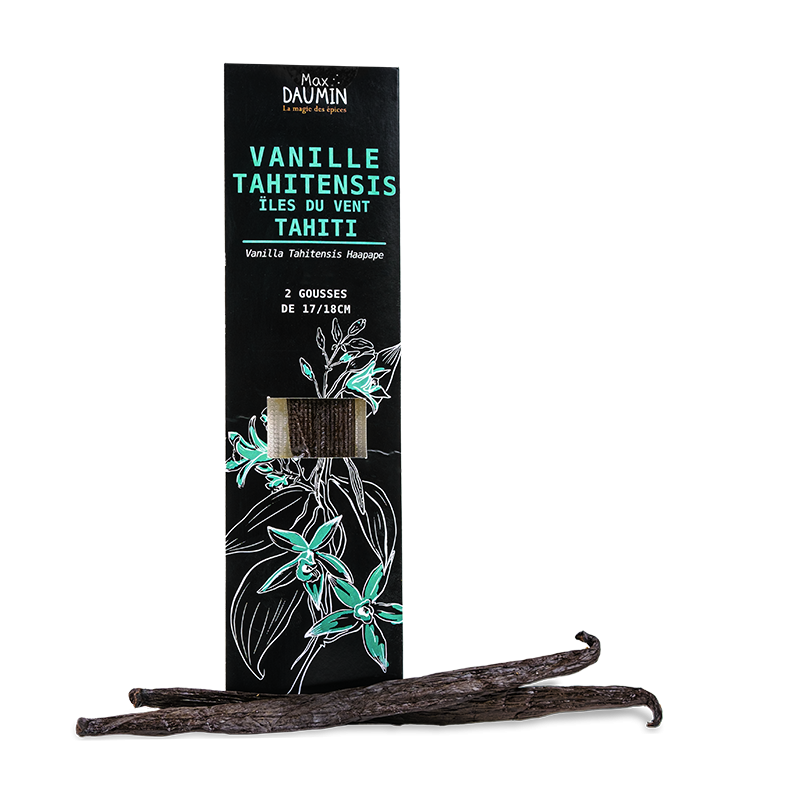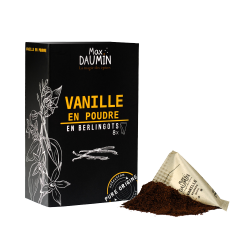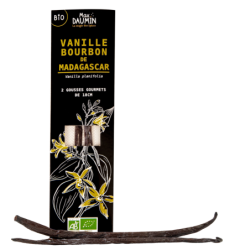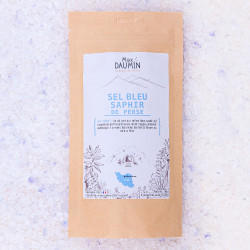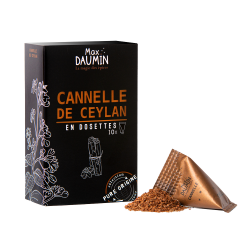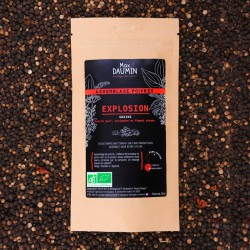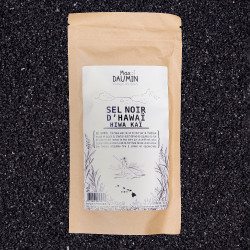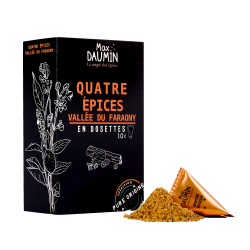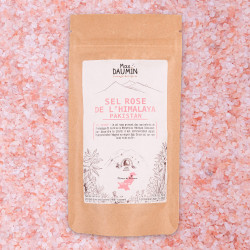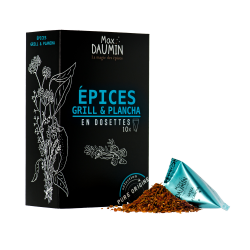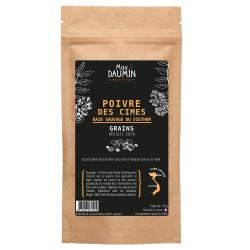Vanilla Tahitensis Haapape
Vanilla Tahitensis (Vanilla Tahitensis) prized by great chefs is a different botanical variety from Bourbon Vanilla (Vanilla planifolia). It is a remarkable vanilla.
Our producer in Tahiti does an expert job. Cultivated only with natural means, transformed with care for 5 months. He manages to obtain an exceptional aromatic power for this variety. A captivating vanilla with flavors of prune, cocoa, anise, caramel, wood and finally vanilla.
2 pods 18cm / vacuum packed.
-
Net weight : 8g

History
Plant & perfume
Grown mainly in the Pacific, Vanilla Tahitensis commonly called Vanilla Tahiti is found in French Polynesia in the Leeward Islands (Raiatea, Tahaa, Huaninée) and Windward Islands (Tahiti). The origin of this vanilla is not clear. It appears to be a cross between Vanilla Planifolia and Vanilla Odorata. Vanilla Odorata is a very rare wild vanilla found in the forests of Belize and Guatemala, not commercialized.
The Vanilla genus belongs to the Orchid family and has over a hundred species. These are lianas growing on a stake (natural or artificial). Only a few are marketed for taste purposes: note Vanilla tahitensis and Vanilla pompona and Vanilla planifolia.
Our Tahitensis vanilla is grown by Sylvain, our producer in Tahiti. He does goldsmith work. Cultivated only with natural means, transformed with care for 5 months. He manages to obtain an exceptional aromatic power for this variety. One of the keys he masters is to manage to get down to 45% humidity (uncommon rate in this genre) in order to promote an explosion of high quality flavors.
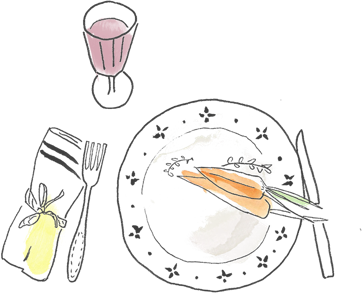


Benefits
Cooking and Virtue
Use your finger rather than a knife to extract all the vanilla beans. The knife may take away some fibers of the pod bringing a little bitterness and thus slightly altering the quality of your product. Nevertheless, the hollow pod can be used for an infusion or a vanilla sugar. The pods can also be dried in the open air and then ground to be used as a powder as well.
Vanilla will express itself completely in infusion in milk, cream, in cannelés, custards, flanks, ice cream, yogurts but it works very well with fish but also vegetables !

Origins
A long journey
The word Vanilla comes from Vanilla in Spanish which means "pod". Indeed Herman Cortés led his first expeditions within the Aztec Empire in 1519 and brought it back to serve it in the Kingdom of Spain. She then entered the European royal courts. Conquered by Vanilla, Louis XIV ordered that vanilla be produced on Reunion Island. But all attempts ended in failure, because only the Melipone bee endemic to Mexico could fertilize vanilla.
In 1841, a slave and only 12 years old, Edmond Albius discovered a manual vanilla pollination technique that caused an explosion in vanilla production.
In Tahiti between 1845 and 1848 different plants from different countries were introduced (Vanilla Planifolia from Réunion, Vanilla from Mexico, Vanilla from the Philippines brought back by Admiral F. Hamelin which will define the base of Vanille Tahitensis). Vanille Pompona in 1850, then in 1874 from Mexico again. All these imports will give birth to the hybrid Vanilla Tahitensis and its 14 cultivars.


2 other products in the same category:

Customers who bought this product also bought:

